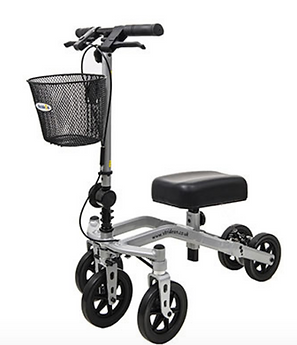
Ms Julie Kohls
Consultant Orthopaedic Surgeon
Arthritis can occur in any joint in the foot and ankle. Arthritis broadly means that the joint is wearing out. The arthritis can occur after an injury. Often the injury can be in the very distant past. Arthritis can also occur because of slight asymmetries in gait and the way the leg is loaded so that slowly over time, a joint that has had too much load, wears out.
The symptoms of arthritis can wax and wane but for some patients arthritis in the foot or ankle become part of that patients daily routine and the pain becomes such that many activities are not possible. Studies have shown that ankle arthritis is as debilitating as arthritis in the knee and hip.
FOOT AND ANKLE ARTHRITIS //
WHY IS ARTHRITIS SO PAINFUL?
Arthritis is the wearing out of the cartilage of a joint. Cartilage has no nerve endings. Pain however comes from a variety of sources.
The lining of the joint can be come very inflammed which in itself is a cause of pain. The inflammed lining can also be pinched and trapped in the joint which is a further source of pain.
Bone is very well innervated, meaning the many nerve endings in bone, can create powerful levels of pain when they are stimulated to do so. Once the cartilage is well and truly worn out, the bones that make up the joint grate on each other. This is also potentially very painful.


MOST COMMON JOINTS TO HAVE FOOT AND ANKLE ARTHRITIS:
-
Ankle
-
Subtalar Joint
-
Subtalar and Talonavicular Joint
-
Talonavicular joint
-
Combined Hindfoot arthritis
-
Naviculocuneiform joint
-
Tarsometatarsal Joints
-
Hallux Rigidus
QUICK HELP
Activity modification, over the counter heel cushion inserts, and a good pair of walking shoes may be all that you need.
A short course of anti-inflammatories and topical anti-inflammatory gel may also be very helpful.
XRAYS & APPOINTMENT IF:
-
If the pain isn't settling and you can not do all the activities you need to do
-
If you have noticed that your foot or ankle is slowly changing shape
-
If you have quite significant swelling
-
If you have been having physiotherapy without any success
WHAT WILL HAPPEN IN CLINIC?
-
You will have a detailed history and examination, specialist X-rays and most likely an Ultrasound scan (especially if in clinic we have decided you would benefit from a steroid injection).
-
Many in fact most patients do not require surgery.
-
Whenever possible I will produce a list of the structures that have been injured, the biomechanical imbalances that need to be redressed and a plan for rehabilitation for you
-
Many patients require insoles
-
Many patients require physiotherapy
HOW CAN I MANAGE CRUTCHES?
-
There are a number of useful devices such as scooters or modified braces that allow patients to be mobile without putting weight on the ankle joint for 6 weeks.
-
Try the I-Walk or the Knee Rover or rent a Strideon in the images below
PAIN DIARIES
-
If you do have an injection it is very importent to keep a record of how the injection affects your foot
-
It can help to decide whether or not the area injected is in fact the source of your symptoms
PAIN DIARY RSCH PAIN DIARY PRIVATE PATIENT


HOW CAN I MANAGE CRUTCHES?
